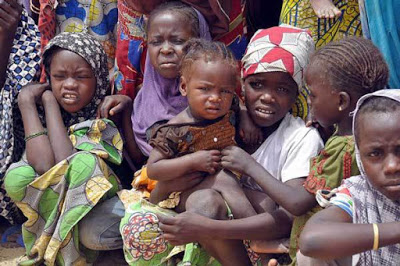Global Hunger On the Rise for a Third Year
 |
| PH – September 12, 2018 |
The population of hungry people is rising across the world, a UN report has shown, with more than a quarter of them in Africa.
Out of the 821 million people who faced shortage of food in 2017, 257 million were found in the continent.
A new report on the State of Food Security and Nutrition in the World released on Tuesday showed that world hunger rose in 2017 for the third consecutive year, fuelled by conflict and climate change.
According to the report, hunger is worsening in South America and most regions of Africa as one in nine people went hungry in 2017.
The steady rise in number is fast jeopardising the global goal to end hunger and malnutrition by 2030, the UN warned.
According to the report co-authored by the Food and Agriculture Organization of the United Nations (FAO) and UN partner agencies (IFAD, UNICEF, WFP and WHO), limited progress has been made in addressing the multiple forms of malnutrition, putting the health of hundreds of millions of people at risk.
The study noted that hunger has been on the rise over the past three years returning to levels from a decade ago.
“This reversal in progress sends a clear warning that more must be done and urgently if the Sustainable Development Goal of Zero Hunger is to be achieved by 2030, the agencies said.
Based on happening in the country, Nigeria contributes to this high figure.
Nigeria has the highest prevalence rate of stunted under-five children in sub-Saharan Africa, with about 17. 2 million children affected.
The 2016/2017 Multiple Indicator Cluster survey for Nigeria showed that 59 percent of the under-five children in the North-west are stunted, followed by the North-east with 52 percent and North-central with 35 percent.
The Boko Haram insurgency in the North-east and flooding in parts of the country have also displaced many Nigerians, leaving them relying on donors for their daily meals.
The annual UN report found that climate variability affecting rainfall patterns and agricultural seasons, and climate extremes such as droughts and floods, are among the key drivers behind the rise in hunger, together with conflict and economic slowdowns.
“The alarming signs of increasing food insecurity and high levels of different forms of malnutrition are a clear warning that there is considerable work to be done to make sure we ‘leave no one behind’ on the road towards achieving the SDG goals on food security and improved nutrition,” the heads of the UN Food and Agriculture Organization (FAO), the International Fund for Agricultural Development (IFAD), the UN Children’s Fund (UNICEF), the World Food Programme (WFP) and WHO warned in their joint foreword to the report.
“If we are to achieve a world without hunger and malnutrition in all its forms by 2030, it is imperative that we accelerate and scale up actions to strengthen the resilience and adaptive capacity of food systems and people’s livelihoods in response to climate variability and extremes,” the leaders said.
The report called for implementing and scaling up interventions aimed at guaranteeing access to nutritious foods and breaking the inter-generational cycle of malnutrition.
This according to the report has become necessary because poor progress has been made in reducing child stunting with nearly 151 million children under the age of five too short for their age due to malnutrition in 2017, compared to 165 million in 2012.
On the other side of hunger, the rate of adult obesity is also said to be on the rise with 672 million (13 percent) adult obese.
Though the problem is most significant in North America, Africa and Asia are also experiencing an upward trend, the report shows.
The UN agency called for policies which must pay special attention to groups who are the most vulnerable to the harmful consequences of poor food access: infants, children aged under five, school-aged children, adolescent girls, and women.
The report also calls for greater efforts to build climate resilience through policies that promote climate change adaptation and mitigation, and disaster risk reduction.
“At the same time, a sustainable shift must be made towards nutrition-sensitive agriculture and food systems that can provide safe and high-quality food for all,” it said.


